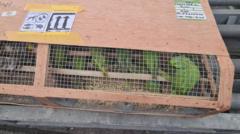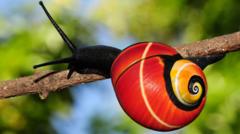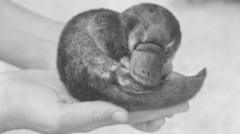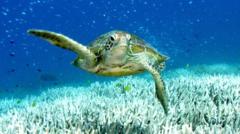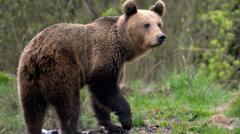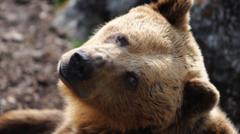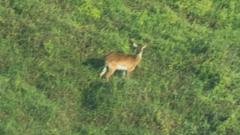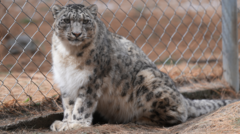This release marks a monumental step in the recovery of two species of Desertas Island land snails, previously thought extinct.
Restoration of Endangered Snails: 1,329 Released Back into the Wild

Restoration of Endangered Snails: 1,329 Released Back into the Wild
In a significant conservation effort, 1,329 critically endangered snails bred at Chester Zoo have been reintroduced to their natural habitat.
More than 1,300 pea-sized snails, classified as critically endangered, have been released on a remote Atlantic island after being bred at Chester Zoo. This endeavor aims to rejuvenate two species of land snails from Desertas Island, which had not been seen for over a century, raising hopes for the revival of their populations.
The conservation success story began when a group discovered a small population of the snails on rocky cliffs in Deserta Grande, near Madeira, between 2012 and 2017. Initially feared to be extinct due to habitat devastation inflicted by invasive species like rats, mice, and goats, the finding of around 200 live snails prompted a meticulous rescue operation. These snails were then transported to zoos in the UK and France for breeding.
At Chester Zoo, the team created a suitable habitat for 60 of the surviving snails, carefully replicating conditions and nurturing them until they could reproduce. The zoo successfully bred 1,329 offspring, each marked with non-toxic, UV-sensitive dots to facilitate tracking and monitoring after their release back into the wild.
Dinarte Teixeira, a conservation biologist from Madeira's Institute for Nature Conservation and Forests, explains that the color coding will help monitor the movement, growth, and survival rates of the snails in the newly restored wild environment. The release occurred on Bugio, a neighboring island where invasive species have been eradicated, creating a safe haven for the snails.
Gerardo Garcia from Chester Zoo emphasizes that this reintroduction is a key milestone in a broader species recovery initiative. Should this release be successful, plans are already being discussed for further releases in the upcoming spring. Heather Prince of Chester Zoo highlights the ecological importance of these snails, noting their role in nutrient cycling and maintaining the health of the island’s ecosystem.
This joint conservation effort illustrates the potential for turning around the fate of endangered species and restoring the fragile balance of their habitats.
The conservation success story began when a group discovered a small population of the snails on rocky cliffs in Deserta Grande, near Madeira, between 2012 and 2017. Initially feared to be extinct due to habitat devastation inflicted by invasive species like rats, mice, and goats, the finding of around 200 live snails prompted a meticulous rescue operation. These snails were then transported to zoos in the UK and France for breeding.
At Chester Zoo, the team created a suitable habitat for 60 of the surviving snails, carefully replicating conditions and nurturing them until they could reproduce. The zoo successfully bred 1,329 offspring, each marked with non-toxic, UV-sensitive dots to facilitate tracking and monitoring after their release back into the wild.
Dinarte Teixeira, a conservation biologist from Madeira's Institute for Nature Conservation and Forests, explains that the color coding will help monitor the movement, growth, and survival rates of the snails in the newly restored wild environment. The release occurred on Bugio, a neighboring island where invasive species have been eradicated, creating a safe haven for the snails.
Gerardo Garcia from Chester Zoo emphasizes that this reintroduction is a key milestone in a broader species recovery initiative. Should this release be successful, plans are already being discussed for further releases in the upcoming spring. Heather Prince of Chester Zoo highlights the ecological importance of these snails, noting their role in nutrient cycling and maintaining the health of the island’s ecosystem.
This joint conservation effort illustrates the potential for turning around the fate of endangered species and restoring the fragile balance of their habitats.

